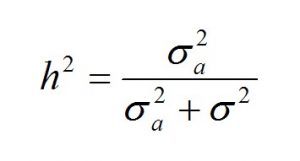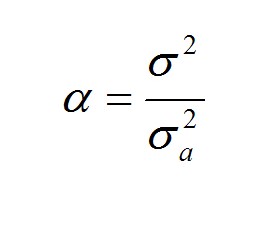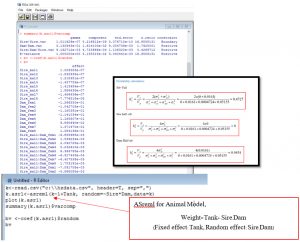Animal Model
In animal genetics, measurements are taken on individual animals, and thus, the model of analysis should include the animal additive genetic effect. The remaining items in the model are factors that have an effect on the trait of interest. The infinitesimal genetic model is assumed, and the animals that have been measured should represent a random sample (or the entire sample) of progeny of the breeding males and females in the population. That means measurements should not be taken only from the biggest progeny, or the best progeny, or the poorest progeny, but a random sample of progeny.
A simple animal model with one record per animal is
y = µ + a + e
where
y is the phenotypic record or observation,
µ is the overall mean of the observations,
a are the additive genetic values of animals, and
e are the residual or environmental effects associated with the th observation.
Assumptions for this model are
1. The population is large (infinite) in size.
2. The association of alleles from the two parents is assumed to be at random.
3. No selection has been imposed on individual records.
4. Only additive genetic effects exist.
5. The influence of other factors on the observations is absent.
E(a) = 0 and E(e) = 0 ,
V(a) = σ² and V(e) = σ²
The heritability of the trait is

and the ratio of variances is


Marine Science Solution
Quantitative genetic method was implemented to derive the first heritability estimate of survival under high CO2 conditions in a metazoan.
ASreml was used for a hierarchical set of univariate “animal models”
Find the original publication
